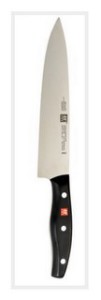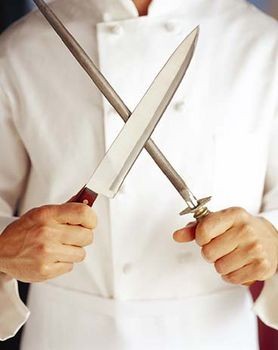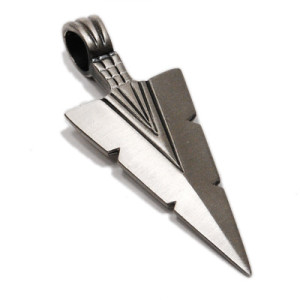 |
| Cutting Edge Marketing |
Twice a year I like to sharpen my kitchen knives to make sure I can slice and dice like the pros. A razor sharp knife allows me to fan an avocado, debone a chicken or slice a strawberry so it can add both color and dimension on the plate. I remember Julia Child once saying that you can’t be an exciting cook with a dull knife.
While getting my edge on with my handy knife sharpener, I thought about how marketing segmentation and having super sharp tools can help you excise wasted marketing dollars so you can reach your goals. A sharp knife is often the most important thing to a chef next to the quality and freshness of their food. Without the ability to cut with precision, you can ruin what you are trying to section. Marketing is the same and understanding the importance of segmentation is closely aligned with that precise tool.
SEGMENTING THE MARKET
 |
| Finding the right segment |
Markets tend to be big and complex and unless you keep segmenting into slices and wedges, you are trying to reach the wrong part of a market and thus wasting your precious marketing funds. You may want to reach a very specific demographic in your marketing campaign but segments consists of human beings with a range of behaviors, attitudes and complexity. Whether you work in B2C or B2B, you need to make sure your dollars and messages reach the right audience.
The tip of the spear
For marketers to break through, they need a sharp spear. You penetrate markets by having the tip of the spear pierce through and allowing you inside. By tip of the spear I am talking about how you are positioned when you knock on a customer’s door. Does your product or service represent the solution to a problem they have? Are you uniquely qualified to fix their pain? Do you come to them with a sales brochure or packaging that is so complicated and filled with stuff that they have no idea how you can help them. The tip of the spear means that what you do penetrates into their heads and represent a very specific and clearly defined solution to a need.
An Example
 |
| What is at the tip of your spear? |
An example may be helpful to explain my point. I have several friends who are consultants in varying fields from finance, operations, human resources, marketing and design. Their work in business to business consulting. I also know many people who market products in the business to consumer side as well. In my conversations with each of them, I am always recommending that they can only represent one solution to potential clients who don’t know them. They can’t occupy a Grand Canyon size space or position in the minds of potential clients that is so big and wide, that no one could fill it.
My graphic design friend who does work for me reminds me of Jiffy Lube. All he does is graphic design and he is remarkably talented and fast. I can give him a project and I’m in and out in 15 minutes. (At least in my mind it feels like 15 minutes). His combination of focused expertise and speed is appealing. There are thousands of graphic artists in the market, but why not market his business like the Jiffy Lube of graphic design who can change your image with great speed and expertise. Why go to the dealer to change the oil when you can go to an expert, without an appointment and be in and out in 15 minutes? My graphic design friend provides a service – great design that is very quick, high quality and at a reasonable price. He needs to think about segmenting the market into thin slices of people who need what he is uniquely qualified to deliver and could benefit with some sharper positioning to his core target. (should you be interested in talking to him, you can find a link to his website here).
HOW TO SEGMENT A MARKET
I like to start by asking these five questions when cutting up a market.
WHAT IS THE COMMON DENOMINATOR AMONG YOUR CURRENT CUSTOMERS?
Do they all have similar unmet needs? Are your customers seeing you in a way that perhaps you don’t realize that might be a tip to how to find more people with a similar need? Do you ask customers/clients why they are buying from you and what would motivate them to buy more? Do you think of yourself as a generalist when people want to buy from experts? — My graphic design friend doesn’t position himself as The Jiffy Lube of graphic design but that is how I see him.
WHAT GAPS ARE MISSING FROM YOUR COMPETITORS?
Are people buying from you because you are delivering a benefit that you never highlight in your marketing? Is it risky to buy from a competitor but do you offer some assurance that potential customers might appreciate? Do your competitors have more business than you simply because they know more people? Do you simply need to reach more potential customers or clients by increasing your influence within a more narrow range?
ARE YOU TRYING TO REACH TOO MANY PEOPLE OCCASIONALLY VERSUS A FEW FREQUENTLY?
Segments always need refinement- keep narrowing your focus and sharpen your own edge. A scattered effort will give bland results. Keep finding ways to slice thinner and thinner. Maybe your target has 8 to 10 dimensions and although they represent a small segment- say 3% of potential buyers, that segment is an affordable group to reach who are willing to pay a premium for services you offer. The bonus is that because they are small universe of prospects, you can pierce through and reach them repeatedly because they aren’t too large a target.
COULD YOU BE MORE FOCUSED IN WHAT YOU OFFER AND WHO YOU OFFER IT TO?
Focus is a powerful marketing tool because it allows you to go deeply into a subject without a diluted approach. No matter what the business, most companies appear to spread themselves too thin as they try and find growth through addition- versus subtraction. Instead of finding new markets or customers for their core product, they search for the next big thing. Can you subdivide your market segment further? Businesses keep specializing more and more so that we want to buy from experts in very narrow areas. A long time ago I was satisfied buying my morning cup of Joe at 7-11. Then an expert moved into the neighborhood called Starbucks. I want to buy products where a brand stands firmly and deeply enmeshed in one area. When they are good at many things, they tend to stop being great at just about everything they do. Are you a fan of the mediocre?
WHO HOLDS THE PURSE STRINGS?
Do you really understand who might pay for your product? Who is the gatekeeper to decision making? Who really can say YES and cut the purchase order or buy the product. If you selling something technical, it may be a completely different person like someone in finance, for example who also needs to be convinced of the benefit your product provides. Are you reaching the right person with your marketing campaign? You might segment your market based on who pays for your product and service- not who will use it.
This stuff is not that complicated.
As you segment away, it becomes easier to find a nice metaphor to explain what you do and how it is unique. The graphic design firm that is like Jiffy Lube is a good example- easy to understand and you get the benefit quickly and best of all it differentiates you from your competitors.
When your vacuum cleaner breaks, you seek out someone who specializes in fixing vacuum cleaner. You don’t need an electrician, a plumber or a jack of all trades. You need a specialist who can meet your need and has easy access to the spare parts required to do the job.
 |
| Sharpen your message |
If you are selling a service or product, is it clear to your target what you fix and exactly where your expertise lies? (Hint: It can’t be 15 things – pick one).
Maybe it is time to sharpen up your message and slice up your target.






Great post for all types of businesses. I see a clear connection between these suggestions and what I need to do to market myself as a speaker and to sell my book. thanks.
Many people are afraid that getting specific about their target market will lessen the business appeal. But as you said, Starbucks is known for coffee, BUT they’re smart enough to know that once you’re in buying coffee you might want a pastry or your own cup as well. They’re ready to sell you all the ancillary products.